CANopen have two types of methods for transferring and receiving data between server and client.
- Expedited mode = Send fixed bytes (maximum 4 bytes)
- Normal mode = Send maximum 7 bytes at the time
If I want to send for example an uint32_t value from my dictionary object and that value is at the index and sub_index, I just send my command specifier CS with a transmit and also the index and sub_index. Done!
http://www.byteme.org.uk/canopenparent/canopen/sdo-service-data-objects-canopen/
My question is:
Is the Normal mode ONLY made for transferring arrays, you know "variables" in the object dictionary that have more than one elements, but their address are put into the sub index 0x0?
